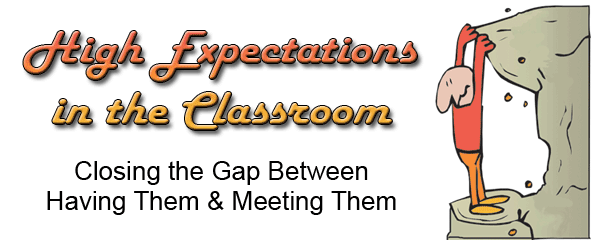|
 |
 |
|
 |
|
High expectations are intended to
create a credible and relevant gap between participants’
present and future performance. In today’s academic
culture, students tend to avoid endeavors where poor
performance may expose them to peer ridicule, making
motivation to close the gap a special challenge. Setting
high expectations requires supportive interaction among
the learning community, the participants, and the
instructional staff. Though there is much more to
setting and realizing high expectations, here are some
techniques for helping your students realize the high
expectations you set within the classroom.
•
Choose classroom
activities that are demanding, but that also have
clear expectations for performance
•
Provide a
mechanism by which students can calculate their grades
and measure progress in the course
•
Link high
classroom standards with long-term personal and
professional behaviors that will be beneficial in
future classes and beyond college
•
Communicate the
importance of high standards as they relate to
performance in "the real world" of professional
standards (Commission on Accountability in Higher
Education, 2005)
•
Envision
yourself as a student in your class and ask yourself
which course expectations and structures for meeting
these expectations might be perceived as unrealistic.
•
Don’t let students convince you to lower standards
through any of the following:
delay tactics
lobbying to eliminate portions of assignments
demanding examples of previous exam problems
using office hours to have you set up or simplify
problems
asking for answers so that they can avoid thinking
critically
•
Illustrate that you "walk the talk" of high
expectations by making students aware of new
professional challenges you are facing and undertaking
in your teaching.
For more on this topic, see
Setting High Expectations
by Peter Smith
in the 4th
Edition of the Faculty Guidebook
|
|
|
|
|
|
